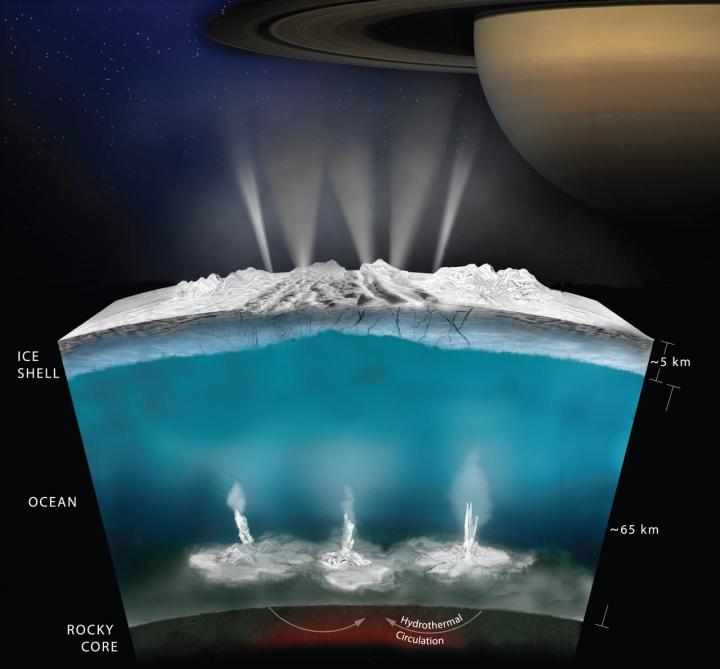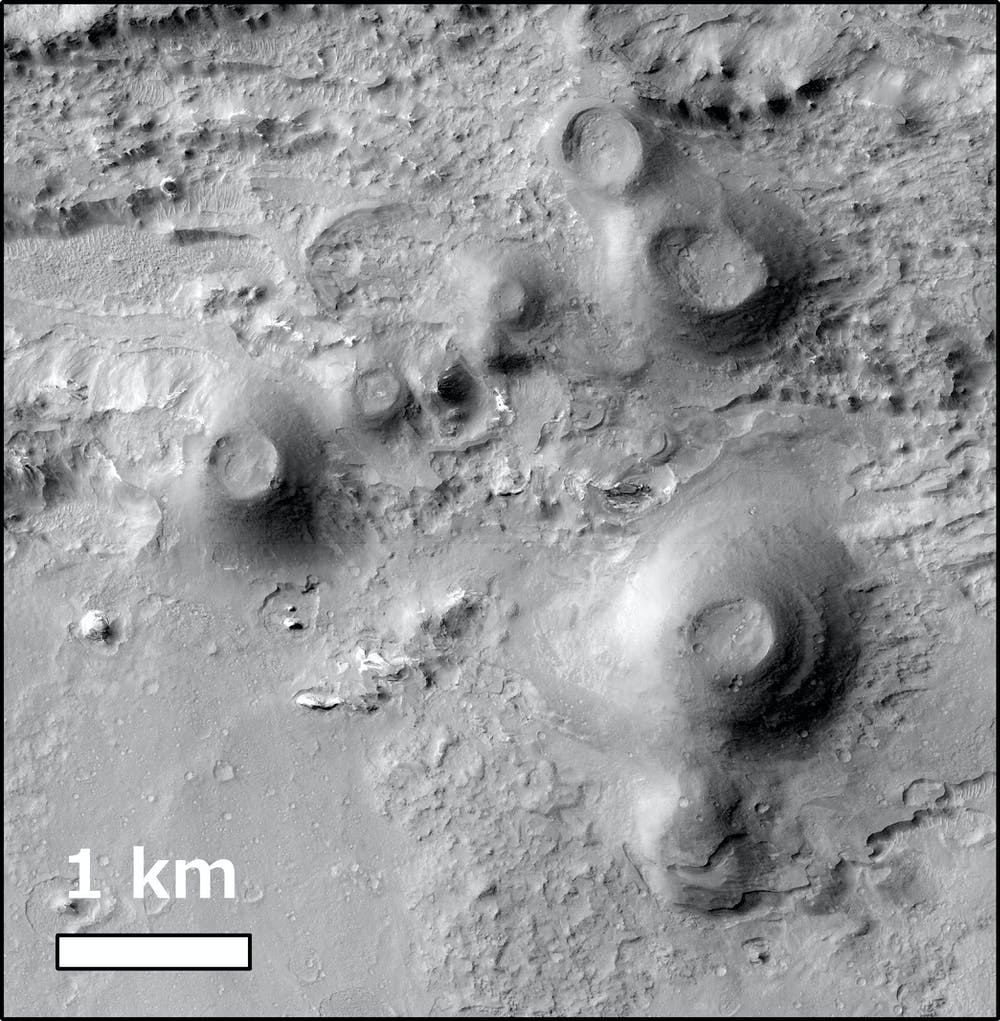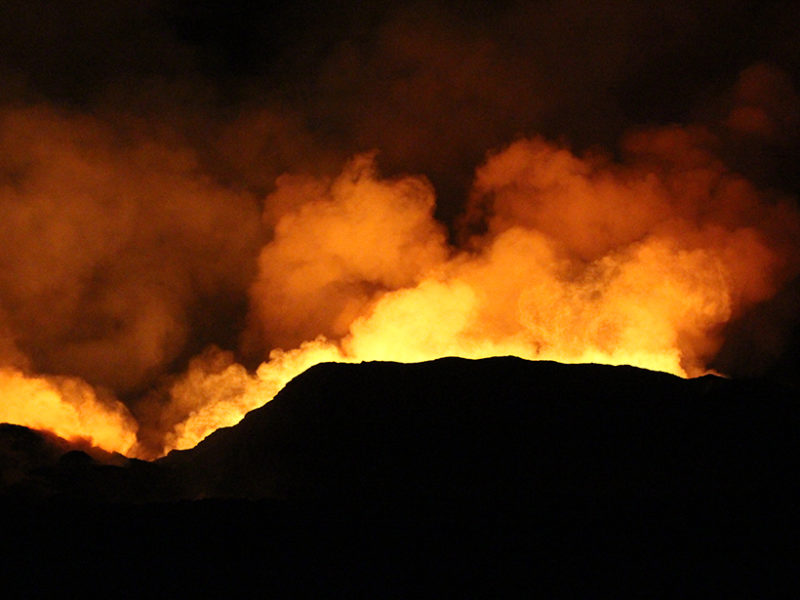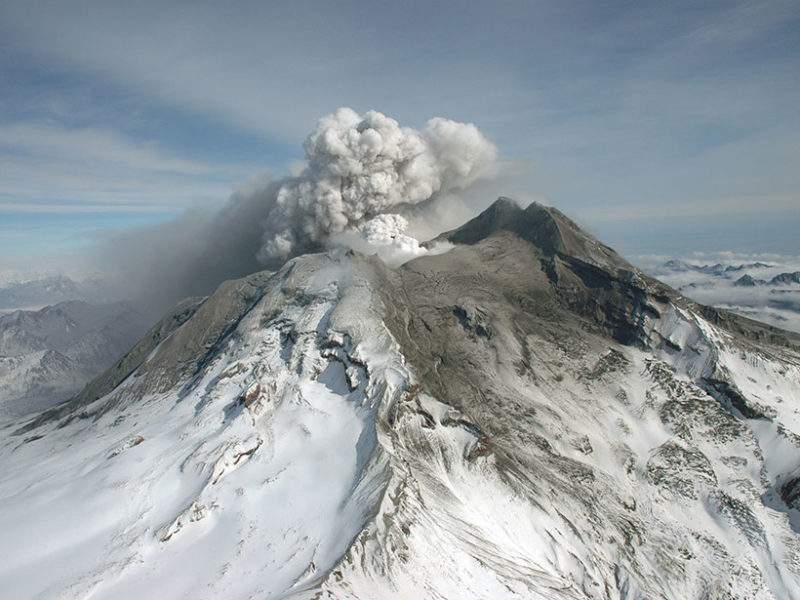New research shows that most of the water once thought to have escaped Mars is actually still trapped in the minerals in the crust. And life may still be present and accessible on the red planet. Plus, a cosmic lens, Bennu, volcanoes, more news from LPSC 2021, and our weekly What’s Up.
Media
Transcript
Hello and welcome to the Daily Space. I am your host Dr. Pamela Gay.
And I am your host Beth Johnson.
And we are here to put science in your brain.
This week, the planetary science community is gathered together virtually, sharing all their latest results about worlds near and far, at the Lunar and Planetary Science Conference. Later today we’ll be discussing news about Mars’ water and one of my favorite topics (and Pamela’s), volcanoes here and on other worlds.
Not all the news, however, is limited to planetary science. In our lead story of the day, astronomers have begun to resolve the structure of the universe on a level of detail previously only seen in simulations. Thanks to observations of bright quasars, we’ve been able to trace out the vaguest outline of the cosmological structure of the universe for some time, but these bright systems are rare and don’t really show any detail on what is going on.

Now, using 140 hours of observing time on the 8.2m Very Large Telescope (VLT) in Chile, astronomers have peered into the faint details of the large-scale structure and resolved a sea of previously undiscovered small galaxies. According to study co-author Joop Schaye: We think that the light we are seeing comes mainly from young galaxies, each containing millions of times fewer stars than our own Milky Way. Such tiny galaxies were likely responsible for the end of the cosmic ‘dark ages’, when less than a billion years after the Big Bang, the universe was illuminated and heated by the first generations of stars.
So far, only a tiny fragment of the sky has been seen, but the researchers behind this work are working to improve the camera they’re using on the VLT so that it can capture two to four times more of the sky in its field of view. This work is being published in Astronomy and Astrophysics and was led by Roland Bacon.
Looking into the first moments of the universe isn’t easy, and sometimes it takes more than just a massive telescope and countless hours of observing. Sometimes, you have to actually figure out how to use gravity as a lens to peer into the early universe.
Since gravity affects everything with mass or energy, and photons of light have energy, gravity can bend the path of light as it moves through space. When just the right collection of objects pile together between us and some distant galaxy, the collected gravity can act like a lens to focus light in our direction, light that normally would have journeyed elsewhere.

Using the Very Large Array of radio dishes in New Mexico, scientists have explored the region of sky around the galaxy cluster MACJ0717.5+3745 looking for distant systems magnified by gravity, and they found one. The impossibly named galaxy VLAHFF-J071736.66+374506.4 has been magnified six times by the cluster’s gravity, allowing astronomers to observe an ancient galaxy like nothing previously seen.
According to Eric Jimenez-Andrade: The magnification provided by the gravitational lens, combined with extremely sensitive VLA imaging, gave us an unprecedented look at the structure of a galaxy 300 times less massive than our Milky Way at a time when the universe was less than half its current age. This is giving us valuable insights on star formation in such low-mass galaxies at that time and how they eventually assembled into more massive galaxies.
This work is described in a pair of papers appearing in The Astrophysical Journal.
From the edge of the universe, we now jump to the surface of an asteroid near and dear to our hearts. Back on October 20, 2020, the OSIRIS-REx mission planned to gently boop the surface of the asteroid Bennu and grab a bit of rock as it bounced back away. Things didn’t exactly go as planned, and instead of a gentle boop, the spacecraft dramatically plunged into the surface before pulling away with more rock than it ever expected to pick up.
Now, in a presentation from Dante Lauretta at the LPSC, we learned that plunge was a lot scarier than we knew. According to his abstract: Six seconds after making contact with the surface, the spacecraft fired its thrusters and initiated the backaway maneuver. At this point, the spacecraft still retained a downward velocity of ~4 cm/s. The backaway thrusters fired for 3 seconds before the downward velocity was arrested and the spacecraft began to safely move away from Bennu. At this point, the TAGSAM head had penetrated about 50 cm into the surface without much resistance.
Put another way, by Paul Byrne on Twitter, the spacecraft would have continued meters into the asteroid if it hadn’t fired its gas canister. This asteroid is more the consistency of a pile of styrofoam balls on Earth. We are so lucky things went as they did, and I can’t wait to get those samples back to earth in September 2023.

The number of talks about worlds with hidden oceans would almost make me believe Bennu is the only dry object in the Solar System. It’s not, but if researcher Alan Stern is right, the ocean worlds, including Pluto, Europa, Tritan, and many others, are actually better places for life to evolve than our own planet Earth. According to a release on his work: Worlds like Earth, with oceans on their exterior, are also subject to many kinds of threats to life, ranging from asteroid and comet impacts to stellar flares with dangerous radiation, to nearby supernova explosions, and more.
Frozen ocean worlds, with crusts tens of kilometers thick, can protect any life they harbor from all these threats. Currently, we don’t have the ability to sufficiently sterilize a spacecraft or dig efficiently through the ice, which means we can’t send a mission to look for this kind of life, and even if we had the ability, we couldn’t do it without risking killing off that life with our world’s germs. Still, I maintain hope that within my lifetime or the next generation’s lifetime, we will develop the needed tech, and some still-to-be-imagined robots will go looking for life in alien oceans.
For decades, we’ve said that Mars lost all its water to space. It turns out, though, that we were wrong.
In a new paper published this week in Science and presented at the Lunar and Planetary Science Conference, researchers have announced that between 30 and 99 percent of Mars’ ancient water is not lost in space but rather locked up in minerals on the red planet.

Let’s go back to the beginning. Billions of years ago, Mars had enough water to be covered in an ocean somewhere between 100 to 1,500 meters deep, about half of our Atlantic Ocean in volume. That water was only on the surface for a billion years, though, and then Mars looked as dry then as it does now. The previous hypothesis was that the water evaporated and escaped into space due to Mars’ low gravity. And some water molecules definitely did that. However, the scientists evaluated the amount of water on Mars in all three forms – ice, liquid, and vapor – and analyzed the current atmosphere and crust.
So what were they looking for? Here’s where a little chemistry comes in. From the press release: Water is made up of hydrogen and oxygen: H2O. Not all hydrogen atoms are created equal, however. There are two stable isotopes of hydrogen. The vast majority of hydrogen atoms have just one proton within the atomic nucleus, while a tiny fraction (about 0.02 percent) exists as deuterium, or so-called “heavy” hydrogen, which has a proton and a neutron in the nucleus.
That lighter weight hydrogen would escape more easily into space than the heavier deuterium, and the difference in escape rates should leave a signature called the deuterium to hydrogen (D/H) ratio. If all or even most of the hydrogen escaped, the Martian atmosphere’s D/H ratio should lean heavily toward the deuterium, but the measured value doesn’t match the expected value.
Okay then. Let’s look at the rocks. Water erodes rocks but it also causes chemical weathering that creates clays and various hydrous minerals. We can find evidence of these processes here on Earth, so it happened on Mars as well. The difference is that on Earth, we have plate tectonics and volcanoes that recycle all that locked up water back into the mantle and then into our atmosphere during eruptions. Mars seems to be mostly inactive when it comes to volcanoes, though. So the water that gets locked up in minerals, stays locked up.
Co-author Bethany Ehlmann sums up the work: Atmospheric escape clearly had a role in water loss, but findings from the last decade of Mars missions have pointed to the fact that there was this huge reservoir of ancient hydrated minerals whose formation certainly decreased water availability over time.
One of the best parts of this research was how it used data from all kinds of sources: meteorites, telescopes, satellite observations, and samples that our army of rovers analyzed. Now we just need Perseverance to find us some evidence of past life!
Or perhaps, current life. In a comment published this week in Nature Astronomy, Dr. Nathalie Cabrol from the SETI Institute hypothesized that life on Mars may not be as extinct as we currently claim. Instead, it may be abundant but underground.

As I noted earlier, Mars’ water disappeared early on in the red planet’s history, leaving behind a dry world, at least on the surface. But water isn’t the only factor important to life. There are other factors like the thin atmosphere, UV radiation, salt content, moisture levels, and temperature fluctuations that can affect the potential for life. As Dr. Cabrol explains: You can walk on the same landscape for miles and find nothing. Then, maybe because the slope changes by a fraction of a degree, the texture or the mineralogy of the soil is different because there is more protection from UV, all of a sudden, life is here. What matters in extreme worlds to find life is to understand the patterns resulting from these interactions.
So instead of following the water, she suggests following the patterns. We need to examine Mars as an entire biosphere, questioning where life could be now but also how it would have gotten there. Back when Mars was wet, it had rivers and oceans as well as the wind and dust storms we observe now. All of these mechanisms could have helped distribute microbial life forms around the planet. And now that life could be thriving below the surface.
Remember, however, that we said a few episodes ago that Percy is not going to look in places where life could still be. We want to be careful not to contaminate those places, but we’re planning to send humans to Mars, so we need to figure out how to sample those places before that happens. Quite the conundrum. We’ll keep you updated as decisions are made and missions are planned.
Water isn’t the only liquid in the Solar System. As we mentioned Tuesday, we were deeply amused to find that Io, with its lava reservoirs, was listed as an ocean world. In a way, this kind of means Earth has both surface oceans of water and sub-surface seas of magma.

And that magma likes to escape. Back in July 2018, residents of the Big Island of Hawaii were sent fleeing from their homes, as the Kilauea volcano split open subdivisions and casually oozed lava over everything. This particular volcano is one of the more active and most studied in the world, but it still has a lot of surprises to offer. This eruption was the stuff researchers dreamed of, and then graduate student Penny Wieser flew halfway around the world to take advantage of all the volcano was offering.
Using samples of minerals formed during the eruption, she and her team worked to understand where in the Earth this molten rock originated. In our standard textbook diagram of a volcano, a single magma chamber feeds eruptions. Kilauea, however, breaks the mold and actually has a shallow reservoir 0.5-2 kilometers beneath its eastern rim, and another 3-5 kilometers deep reservoir to the south. Each reservoir has a different composition reflecting the amount of gas at that depth and the different mixes of chemicals.
Early measurements that looked at gases trapped in volcanic glasses had thought the 2018 eruption came from the shallow reservoir, but Wieser went the extra step of also studying the olivine crystals that formed in the fresh lava. She notes there are structures that looked like they came from the deep reservoir that was responsible for eruptions in the 1960s and 1970s, hinting that the 2018 eruption also came from deeper down. In December 2020, another eruption, this time from the shallow reservoir, occurred, and like so many familiar eruptions, simply fountained and beautifully oozed. This raises the question, “Was the lower reservoir responsible for the home-destroying habits of the 2018 eruption?” Only time and more eruptions will tell, but with each new measurement, we get better at linking chemistry, structure, and severity of the outcome.
Predicting when volcanic eruptions will occur is one of those things we just don’t do well, yet. Currently, I’m stanning the Icelandic Meteorological Office and its “is it / isn’t it” coverage of a possible upcoming eruption on the Reykjanes peninsula, just far enough away from Reykjavik to make things interesting but not dangerous. For a while there, it looked like things were going to blow, but we’re now seeing things calm down and while alerts remain in place, the situation is being reassessed with an update due after the time of this recording [Ed. note: Fagradalsfjall erupted on Friday, 19 March].
To try and understand when we need to worry and when we can ignore rumbling mountains, geologists are turning to thermal data.
In new research appearing in Nature Geoscience, Társilo Girona and colleagues present a 3.5-year analysis of the temperatures around various volcanoes before they erupted. Ninety percent of these eruptions weren’t predicted, but Girona discovered in historic data that the ground temperatures around the volcanoes increased by one degree Celcius in the years leading up to the eruptions. This doesn’t tell us exactly when an eruption is coming, but it does spotlight which mountains are worth worrying about.

The land isn’t heated directly by the magma. Rather the rising magma releases huge amounts of water vapor, carbon dioxide, and sulfur dioxide gas that transfers heat while in some cases vaporizing groundwater. The heat released by these gases and vapors heats the land as it cools and escapes. According to Florian Schwandner, deputy chief of the NASA Ames Earth Science Division: Girona’s research has shown that satellite data can be used to detect a volcano heating up years before an eruption—we didn’t know that before.
Hopefully, this kind of information will make it easier to forecast places not as volcanically covered as Iceland, which I will continue to stan in hopes of a harmless but pretty eruption.
What’s Up
From volcanoes, we now look sunward. This Saturday, March 20, is the equinox. At 4:37am Central time, 5:37am Eastern, the Sun is going to shine straight down on the the Earth’s equator as our poles point perpendicular to the Sun-Earth line. Now, this means that for those of us up north, we are transitioning from winter to summer. For those of you in the southern hemisphere, your summer is coming to an end. But everyone on that one day gets sunlight, both poles and everything in between.

There are some cool experiments that you can do, knowing that the Sun is over the equator on this day. If you go outside and stab a stick into the ground (because why not), and you measure how tall that stick is and then watch its shadow over time… at the moment that shadow is the shortest, that is when the Sun is as close to straight overhead as it is going to get. The ratio of the actual length of the stick to the length of the shadow can be used to calculate just how far north or south of the equator you are.
If this experiment sounds familiar, it’s because Eratosthenes of Cyrene, which is now Shahat in Libya, was the first person to measure accurately the size of our planet Earth, and he did it by comparing the lack of a shadow as sunlight shined directly into a well and the length of a shadow where he was in Alexandria. This experiment did not happen on the equinox; it actually happened on the summer solstice. And that well was in Swenet, now Aswan, a city on the Nile River.
When he made his calculations, what he was looking at was the difference in angle between where he was in Aswan and where he was in Alexandria. He knew how far apart these two places were in terms of how far a camel could travel in a day. And he was able to figure out the size of our Earth based on how far a camel travels. Since you know our world is a sphere, more or less, and you know the Sun will be directly over the equator on Saturday, you can use that shortest point on your stick to figure out where on the world you happen to be located.
So go out, look up on Saturday; I hope the Sun is out. See how short your shadows get.
One of the more awkward parts of pre-recording this show is we expect there to be breaking news today on Biden’s appointment of Bill Nelson as the next NASA administrator, as well as a test firing of the SLS rocket at NASA Stennis. Whatever happens, we remind you that space is hard, and funding space is political. More on these stories tomorrow, but before you go, I just want to remind those of you old enough to remember a random politician flying on the Space Shuttle back in 1986. That politician was then-representative Bill Nelson. Ten days after his return to earth, the Space Shuttle Challenger was lost, and the path of random politicians to fly to space was closed.
This has been the Daily Space.
Learn More
Small Portion of Cosmic Web Mapped Without Using Quasars
- NOVA press release
- CNRS press release
- “The MUSE Extremely Deep Field: the Cosmic Web in Emission at High Redshift,” Roland Bacon et al., to be published in Astronomy & Astrophysics (preprint on arxiv.org)
Gravitational Lensing Used to Find Faintest Radio-Emitting Galaxy
- NRAO press release
- “The VLA Frontier Fields Survey: Deep, High-resolution Radio Imaging of the MACS Lensing Clusters at 3 and 6 GHz,” I. Heywood et al., to be published in The Astrophysical Journal (preprint on arxiv.org)
- “The VLA Frontier Field Survey: A Comparison of the Radio and UV/optical size of 0.3≲z≲3 star-forming galaxies,” E. F. Jiménez-Andrade et al., to be published in The Astrophysical Journal (preprint on arxiv.org)
OSIRIS-REx Mission Finds Bennu Even More Loosely Bound That Thought
- The OSIRIS-REx Touch-and-Go Sample Acquisition Event and Implications for the Nature of the Returned Sample (LPSC abstract)
Ocean Worlds May Be Teeming With Subsurface Life
- SwRI press release
- Some Implications for Both Life and Civilizations Regarding Interior Water Ocean Worlds (LPSC abstract)
Mars’ Ancient Water Not Lost But Trapped in Minerals
- Caltech press release
- NASA press release
- NASA JPL press release
- “Long-term drying of Mars by sequestration of ocean-scale volumes of water in the crust,” E. L. Scheller et al., 2021 March 16, Science
Could There Be Life on Mars Now? Yes!
- SETI Institute press release
- “Tracing a modern biosphere on Mars,” Nathalie A. Cabrol, 2021 March 16, Nature Astronomy
Determining the Subsurface Origin of Kīlauea’s Magma Source
- Eos article
- “Reconstructing Magma Storage Depths for the 2018 Kı̄lauean Eruption From Melt Inclusion CO2 Contents: The Importance of Vapor Bubbles,” Penny E. Wieser et al., 2020 December 14, Geochemistry, Geophysics, Geosystems
Data Analysis Shows Volcanic Lands Heat Before Eruptions
- Eos article
- “Large-scale thermal unrest of volcanoes for years prior to eruption,” Társilo Girona, Vincent Realmuto, and Paul Lundgren, 2021 March 11, Nature Geoscience
What’s Up: Spring Equinox
- March Equinox – Equal Day and Night, Nearly (timeanddate.com)
- Does the equinox sun rise due east and set due west? (EarthSky)
- Measuring the Circumference of the Earth (Khan Academy)
Credits
Written by Pamela Gay and Beth Johnson
Hosted by Pamela Gay and Beth Johnson
Audio and Video Editing by Ally Pelphrey
Content Editing by Beth Johnson
Intro and Outro music by Kevin MacLeod, https://incompetech.com/music/


 We record most shows live, on Twitch. Follow us today to get alerts when we go live.
We record most shows live, on Twitch. Follow us today to get alerts when we go live.